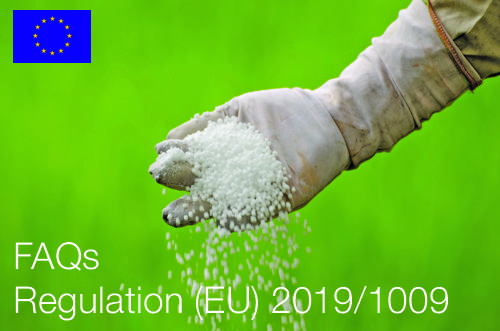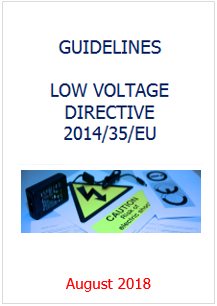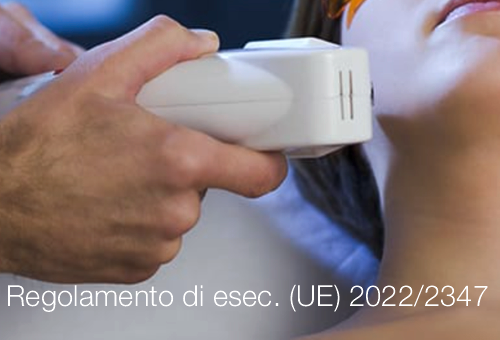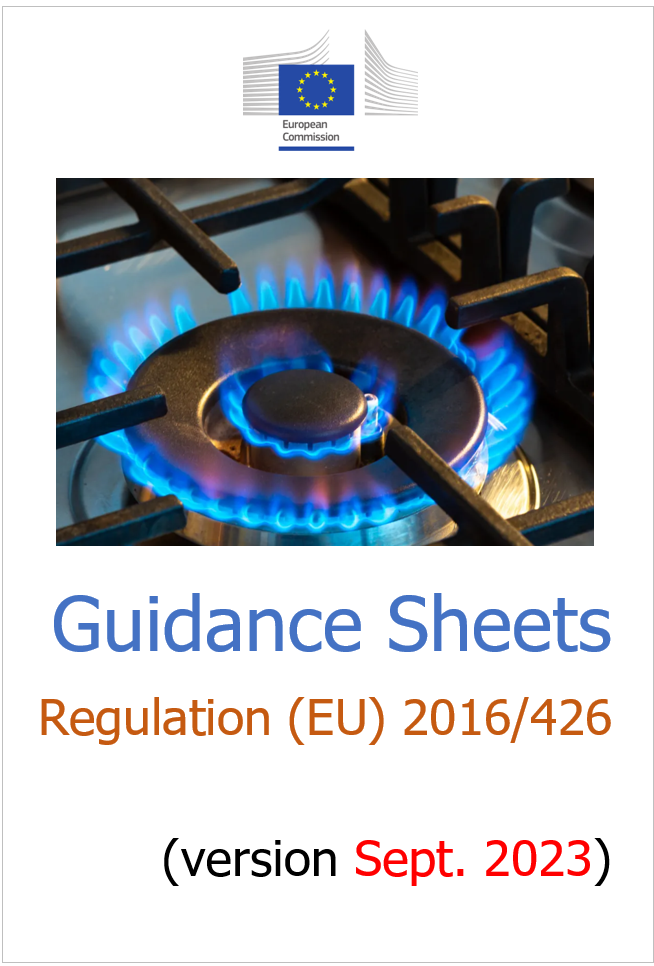
FAQs related to Regulation (EU) 2019/1009 | Ed.October 2024
ID 8863 | 10.10.2024 / Update Edition October 2024
FAQs related to Regulation (EU) 2019/1009 on fertilising products (the ‘Fertilising Products Regulation’)
...
1. What is a fertilising product?
A fertilising product is a substance, mixture, micro-organism or any other material which:
- is applied on plants or their rhizosphere or on mushrooms or their mycosphere,
- or constitutes the rhizosphere or mycosphere, either on its own or mixed with another material,
- and has as a purpose to provide plants or mushrooms with nutrient or improve their nutrition efficiency.
Fertilising products include fertilisers (which provide plants with nutrients), but also other categories of products (such as inhibitors, liming materials or growing media).
For more details on the products concerned, see the question “What is a product function category?”.
2. What is an EU fertilising product?
An EU fertilising product is a fertilising product which is CE marked when made available on the market.
A manufacturer is allowed to CE mark a fertilising product only if it:
- meets the requirements for the relevant product function category;
- meets the requirements for the relevant component material category or categories; and
- is labelled in accordance with the labelling requirements set out in the new rules.
3. Can manufacturers still place on the market fertilising products under national legislation?
Yes. Once the new rules of the Fertilising Products Regulation apply, as of 15 July 2022, the manufacturers have the possibility to choose between two options:
- Either to apply the Fertilising Products Regulation and affix the CE mark to their products; thus, these products move freely in the single market, or
- To follow the rules set at national level in one Member State and, if they intend to place their products on the market in another Member State, they have to follow the mutual recognition rules.
[...] segue in allegato
Contents
Abbreviations:
1. The scope of the FPR
1.1 What is a fertilising product?
1.2 What is an EU fertilising product?
1.3 Does the FPR cover fertilising products containing substances or microorganisms which have a pesticide effect, such as copper compounds or calcium cyanamide?
1.4 Are organic fertilisers in the meaning of the ABPR covered by the FPR?
1.5 Is an organic fertiliser or an organic soil improver as set out in the FPR allowed to be used in organic farming production?
1.6 Does the FPR cover fertilising products for seed treatment?
1.7 Does the POPs Regulation apply to EU fertilising products?
1.8 Do waste rules apply to EU fertilising products or to their component materials? When does a component material recovered from waste reach end-of-waste status?
1.9 Does the FPR change the rules concerning the use of processed manure under the Nitrates Directive?
2. Optional harmonisation
2.1 Does the FPR replace the existing national legislations? Can fertilising products still be placed on the market based on national legislation alone?
2.2 If the fertilising product meets the requirements of national legislation, can the manufacturer indicate reference to national legislation on the label of the CE marked fertilising product?
3. Manufacturers
3.1 The obligation to keep the declaration of conformity and the technical documentation for 5 years after placing the product on the market
3.1.1 As of which date is this period of 5 years calculated for a production series of identical products?
3.1.2 How can manufacturers prove that a product was placed on the market more than 5 years ago?
3.2 What are the obligations of manufacturers when they believe that one of their products poses a risk?
3.3 A company repackages fertilising products already marketed by the original manufacturer, and gives them its own name and logo and then sells on the market. Is this company always considered a manufacturer for the purpose of the FPR? If so, how can it obtain information about the design and production process to carry out the relevant conformity assessment procedure?
3.4 What traceability elements do manufacturers have to include on the packaging?
4. Distributors
4.1 Does the FPR change the obligations of distributors comparing to the current rules?
5. Notified Bodies 16
5.1 What is a notified body?
5.2 What conditions does a conformity assessment body have to fulfil in order to become a notified body under the FPR? Can a private entity be a notified body?
5.3 What procedure does a conformity assessment body have to follow to ask the notification under the FPR? 16
5.4 Does a conformity assessment body have to be able to perform conformity assessment for all types of EU fertilising products in order to become a notified body?
5.5 When a notified body subcontracts the services of a laboratory, does this laboratory have to be accredited for standard 17025?
5.6 How does the Commission ensure the coordination and cooperation between notified bodied for the purposes of the FPR?
5.7 Do manufacturers have to revert to a notified body established in the same EU country where they are registered or where they produce the products?
6. Transitional period
6.1 When will the FPR start to apply?
6.2 After 16 July 2022, is an economic operator allowed to make available on the market products designated ‘EC Fertilisers’ under Regulation (EC) No 2003/2003?
6.3 Is it only distributors that are allowed, after 16 July 2022, to make available on the market products designated ‘EC fertilisers’ under Regulation (EC) No 2003/2003?
6.4 How can an economic operator prove that fertilisers designated ‘EC Fertilisers’ have been placed on the market before 16 July 2022?
6.5 Are manufacturers allowed to start the conformity assessment of their products before the application date of the FPR?
6.6 Can manufacturers use packaging, formerly used for EC Fertilisers placed on the market under Regulation 2003/2003, for EU fertilising products placed on the market in accordance with FPR after 16 July 2022?
6.7 Can manufacturers place blends of EC Fertilisers, where the EC fertilisers are produced in accordance with Regulation 2003/2003 before 16 July 2022, on the market after 16 July 2022 with “EC fertiliser” mentioned on the blend?
6.8 Can bulk EC Fertilisers, placed on the market in accordance with Regulation 2003/2003 before 16 July 2022, be packaged and supplied further with “EC fertiliser” mentioned on the package after that date?
6.9 If an EC fertilizer was marketed with a trade name under Regulation (EC) No 2003/2003, is it possible to maintain this trade name for an EU fertilising product placed on the market after 16 July 2022 in accordance with FPR?
6.10 Can a product produced after 16 July 2022 in accordance with the rules of Regulation (EC) No 2003/2003, which does not comply with the rules of FPR, be placed on the market in the EU? 21
7. Annex I to the FPR – Product Function Categories (PFCs)
7.1 What is the product function category of an EU fertilising product?
7.2 When a product could comply with different product function categories in the FPR, is the manufacturer free to choose the product function for that EU fertilising product?
7.3 May an EU fertilising product belong to two product function categories at the same time?
7.4 What is the maximum content of organic carbon (Corg) that an inorganic fertiliser may contain?
7.5 How to categorise an inorganic fertiliser that contains only secondary nutrients?
7.6 Do ‘nutrients of solely biological origin’ include nutrients from bioidentical, but synthesised amino acids?
7.7 May manufacturers place on the market organo-mineral or inorganic phosphate fertilisers that do not comply with the solubility requirements of mineral fertilisers?
7.8 Can a micronutrient solution fertiliser contain just one form of a straight micronutrient inorganic fertiliser?
7.9 How to classify products with inhibitors?
7.10 How to prove compliance with the requirement for bioavailable nickel, inorganic arsenic or hexavalent chromium?
7.11 What is a fertilising product blend?
7.12 What are the obligations of a blender under the FPR?
7.13 Can a fertilising product blend contain another fertilising product blend?
7.14 Is a blender of two EU fertilising products allowed to place the blend on the market without the CE mark, under national rules?
7.15 When should the requirements for pathogens in fertilising product blends be checked? What are the consequences of regrowth of pathogens in normal conditions during storage or in the distribution chain?
8. Annex II to the FPR – Component Material Categories (CMCs)
8.1 What may EU fertilising products contain/consist of?
8.2 How does a manufacturer demonstrate that the product placed on the market consists ‘solely’ of CMCs? Is the manufacturer required to produce a list of all CMCs present in the final product indicating the % of each one?
8.3 Does CMC 1 apply to plants?
8.4 Do substances, which annual market volume is below one tonne, have to be registered under REACH with a Chemical Safety Report for the purpose of the FPR?
8.5 How to register substances under REACH for the purpose of the FPR?
8.6 Who has to register under REACH?
8.7 Do substances already registered, exported and then imported into the EU have to be registered if used in EU fertilising products?
8.8 What is a biodegradable or soluble polymer (CMCs 1 or 11)?
8.9 If raw materials taken from earth/ground are used as raw material and remain in unreacted form in the fertilising product, then is it necessary to do a REACH registration for that material for the purpose of compliance with CMC 1?
8.10 If a material belonging to CMC 1 is produced through intentional chemical reaction between two chemical substances (‘precursors’), at which point in the manufacturing process must the chemical substance(s) comply with the requirements of the FPR? Is it the precursors or the reaction product that need to correspond with such requirements?
8.11 Does the obligation for REACH registration in CMC 1 apply for preservative agents incorporated in fertilising products that are already approved under the Biocidal Products Regulation?
8.12 Do technical additives belonging to, for instance, CMC 1, have to be REACH registered with a dossier containing a chemical safety report covering the use as fertilising products, given that they are not themselves fertilising products?
8.13 Is it possible for the manufacturers of EU fertilising products to rely on the REACH registration done by other operators for a recovered substance?
8.14 A substance or mixture belonging to CMC 1 may contain detectable traces of unreacted ingredients or processing agents. Should these impurities be separately considered as components of the final composition of fertilising product?
8.15 How to comply with the REACH registration obligations in case of substances which evolve over time?
8.16 Can ammonium sulphate as a by-product from caprolactam or coke oven production be classified as a component material belonging to CMC 1 (Virgin material substances and mixtures)?
8.17 Does CMC 2 cover micro-algae?
8.18 How to treat impurities in CMCs 2, 3, 4, 5, 7, 8 and 9, where no REACH registration is required?
8.19 Can a component material belonging to CMC 2 be waste or by-product?
8.20 Can manufacturers use blue green algae (cyanobacteria) in EU fertilising products?
8.21 Does the CMC 2 (Plants, plant parts or plant extracts) include the seaweed extracted with alkaline solution?
8.22 Is it possible to place on the market in an EU country, EU fertilising products containing compost or digestate even if the compost or digestate therein do not meet the national end-of waste criteria?
8.23 Are manufacturers allowed to use plant/plant parts grown for the production of biogas in compost or digestate other than fresh crop digestate? 38
8.24 What post-processes are allowed for digestate (CMCs 4 and 5)?
8.25 Do ‘living or dead organisms’ as input materials in CMCs 3 and 5 cover bio-refinery outputs?
8.26 Are manufacturers allowed to use derived products from animal by-products, such as processed manure, in EU fertilising products?
8.27 What do sewage sludge, industrial sludge and dredging sludge mean?
8.28 Can microbial plant biostimulants contain other component materials than those belonging to CMC 7?
8.29 Are high purity materials out of off-gases generated by manure derived products within the scope of the Animal by-products Regulation?
9. Annex III – Labelling requirements
9.1 Can a manufacturer use green or any other coloured pictogram to provide product information on the label of an EU fertilising product?
9.2 Does the obligation to declare on the label all ingredients above 5% mean also that the manufacturer should consider only ingredients above 5% when performing the conformity assessment procedure?
9.3 How should a manufacturer label the nutrients content of a fertilising product blend if the content of some forms of the nutrients vary over time, like in the case of blending a growing medium with an inorganic fertiliser?
9.4 Are manufacturers allowed to declare nutrients content in a plant biostimulant?
9.5 What has to be included in the use instructions of inhibitors?
9.6 How to declare the nutrients content in blends composed of a fertiliser and a plant biostimulant?
9.7 When nitrogen is not a declared nutrient, but is present above the 0,5 limit in a fertiliser, what are the forms of nitrogen which have to be declared?
9.8 What is the purpose of the maximum residue limits (MRL) labelling requirement and when is it applicable?
9.9 Where can manufacturers find information on maximum residues limits?
9.10 How should chelating and complexing agents be labelled?
9.11 What tolerance applies when declaring the total nitrogen in organo-mineral and inorganic macronutrient fertilisers?
9.12 What tolerances apply to a fertilising product blend?
10. Annex IV - Conformity assessment
10.1 What conformity assessment procedure do the manufacturers have to follow?
10.2 Can national authorities require that Module D1 is used for a fertilising product that only requires Module A, e.g., an organic fertiliser?
10.3 Can conformity assessment be done even if harmonised standards are not adopted?
10.4 Is there a list of approved laboratories to check the conformity with various requirements, such as contaminant content?
10.5 If a manufacturer subcontracts certain parts of the production process to other company, using the original production process of the manufacturer, is it necessary to do a different conformity assessment?
10.6 What do manufacturers test during conformity assessment procedure in Module D1 for materials recovered from waste?
10.7 What do notified bodies test during audits of a quality assurance system in Module D1 for component materials recovered from waste?
10.8 What must manufacturers check during the conformity assessment of a blend?
10.9 What conformity assessment procedure is to be followed for a blend containing an ammonium nitrate fertiliser of high nitrogen content?
10.10 Who performs the conformity assessment in case the product is produced by a manufacturer from a third country and imported in the EU?
10.11 What is expected by ‘adequate analysis and assessment of the risk(s) to be included in the technical documentation’?
10.12 Does technical documentation have to be physically available for the inspection, or can it be accessible through digital means?
10.13 How should the manufacturer perform the conformity assessment of component materials belonging to, for instance, CMC 1, bought from third parties and provide information about their origin or manufacturing?
10.14 What does the technical documentation of a blend has to contain?
10.15 For ammonium nitrate fertilisers of high nitrogen content, does the manufacturer or the notified body perform the detonation resistance test and the oil retention test?
10.16 What does ‘Modules B + C’ mean?
10.17 What is an EU-type certificate issued by a notified body and what is its expiry date?
10.18 What does Module D1 mean?
10.19 How can manufacturers comply with the requirements in Module D1 if they buy the component materials (compost for instance) and do not produce them themselves?
10.20 The reports of what types of accidents or incidents should be included in the quality management documentation in Module D1?
Collegati:
Allegati
|
Descrizione |
Lingua |
Dimensioni |
Downloads |
 |
|
EN |
649 kB |
0 |
 |
|
EN |
659 kB |
1 |
Allegati
|
Descrizione |
Lingua |
Dimensioni |
Downloads |
 |
|
EN |
665 kB |
0 |
 |
|
EN |
773 kB |
0 |
 |
|
EN |
615 kB |
1 |
 |
|
EN |
895 kB |
0 |
 |
|
EN |
216 kB |
7 |



